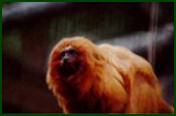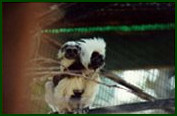
CSS3 Menu Button by Css3Menu.com



|
|
|||||
|
|
 |
|
|||
|
|
|||||
|
CSS3 Menu Button by Css3Menu.com |
|||||
 |
 |
|
 |
||

|
  Species are becoming endangered at an increasing rate every year due to habitat destruction, population growth, pollution and illegal wildlife trade. Through captive breeding, public education, and supportive research, zoos are trying to save as many endangered species as possible.
Species are becoming endangered at an increasing rate every year due to habitat destruction, population growth, pollution and illegal wildlife trade. Through captive breeding, public education, and supportive research, zoos are trying to save as many endangered species as possible.Captive populations can focus public attention on endangered species and their diminishing habitat, as well as help raise funds to support field conservation efforts. Many scientific advances made with captive populations directly benefit the conservation of wild animals. On this page you will find a brief profile of some of the endangered species on exhibit at the Zoo. We are very proud of our contributions toward the prevention of the their extinction.  Golden Lion Tamarin
Golden Lion TamarinOne of the smallest of the New World monkeys, the golden lion tamarin is native to a limited area of southeast Brazil, where they enjoy life in the middle layers of the rainforest. They make nests in the hollows of old trees. In the forest, the golden lion tamarin eats insects, spiders, eggs and fruit. These tiny animals are known for their brilliant, golden long manes. It is normal for the female to produce most frequently twins or triplets, which are raised by the whole family group. Due to the destruction of the Brazilian forest, the golden lion tamarin has lost almost 98 percent of its habitat. All golden lion tamarins are owned by the Brazilian government. Many zoos are breeding tamarins to release back to the wild.  Cotton Top Tamarin
Cotton Top TamarinCotton-top tamarins live in northwest Columbia. They can adapt to living in rainforests, as well as semi-deciduous dry forests. In the wild, their diet consists of insects, fruits, flowers, nectar, frogs, snails, and lizards. An extended cotton-top tamarin family might range over 100 acres. Like all tamarins and marmosets, their young are raised cooperatively, with all group members participating. Much of their time is spent in social grooming. Cotton-top tamarins' facial expressions, postures, hair reaction and high-pitched vocalizations help them communicate.  Ring Tailed Lemur
Ring Tailed LemurThis ancient ancestor of the apes and monkeys is native to the island of Madagascar. Ring-tailed lemurs reside mostly in wooded, dry, rocky areas where they forage at all forest levels, spending about 15 percent of their time on the ground. Their diet in the wild is mostly fruits and insects. At the zoo, they enjoy monkey chow biscuits, browse and fresh produce. They are active in the early morning hours, spending the remainder of the day basking in the sun. On cool days, they sleep with their tails curled around them for warmth. They live in groups of five to twenty, with more adult females present than males.  Black & White Ruffed Lemur
Black & White Ruffed LemurBlack & white ruffed lemurs are native to the east coast of Madagascar, where they live in the tropical rainforests. They are most active at dusk, and spend the early part of the night foraging in the trees. Their diet in the wild is basically fruit, leaves and bark. Black & white ruffed lemurs live in pair-bonded families. These relatives of the monkey are known for their in-and-out sawing bellows, which usually resound in a group chorus. This is their means of communication in the thick forests. Due to human encroachment, the lemurs are losing their habitat and are very endangered. The Santa Ana Zoo's lemurs are part of a cooperative program called the Species Survival Plan, in which several zoos work together to maintain genetic diversity. Local Animal Control/Shelters |
|
|
 |
Home |
Visitor Information |
Conservation |
News & Events |
Support Us |
Contact
ADD SAZOO TO MY FAVORITES | © 2007-2023 Santa Ana Zoo at Prentice Park. All Rights Reserved. |
 |
|
|
|
||||